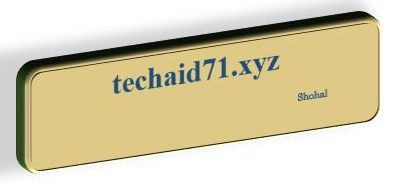National
National symbols of Bangladesh
Flag of Bangladesh:
The national Flag of Bangladesh (বাংলাদেশের জাতীয় পতাকা), known as Red-Green, was adopted officially on 17 January 1972. It consists of a red disc on top of a green field, offset slightly toward the hoist so that it appears centred when the flag is flying. The red disc represents the sun rising over Bengal, and also the blood of those who died for the independence of Bangladesh. The green field stands for the lushness of the land of Bangladesh.[1] The flag is based on a similar flag used during the Bangladesh Liberation War of 1971, which had a yellow map of the country inside the red disc. In 1972 this map was deleted from the flag. One reason given was the difficulty for rendering the map correctly on both sides of the flag. The civil ensign and naval ensign place the national flag in the canton of a red or white field, respectively.
National Emblem of Bangladesh (বাংলাদেশের জাতীয় প্রতীক):
The national emblem of Bangladesh (বাংলাদেশের জাতীয় প্রতীক) was adopted shortly after independence in 1971. Located on the emblem is a water lily, that is bordered on two sides by rice sheaves. Above the water lilly are four stars and a three connected jute leaves. The water lily is the country’s national flower, and is representative of the many rivers that run through Bangladesh. Rice represents its presence as the staple food of Bangladesh, and for the agriculture of that nation. The four stars represent the four founding principles in the current constitution of Bangladesh of 1972: nationalism, secularism, socialism, and democracy.[2][3]
Government Seal of Bangladesh:
The Government Seal of Bangladesh (বাংলাদেশ সরকার সীলমোহর) used by the Ministries of Bangladesh[4] and the Government of Bangladesh[5] on official documents. One version is used on the cover page of Bangladesh passports.[6]
The seal features the same design elements as the first Flag of Bangladesh in a circular setting. The outer white ring is shown with the caption of the official name of the Government of the People’s Republic of Bangladesh in Bengali: গণপ্রজাতন্ত্রী বাংলাদেশ সরকার with 4 red 5-pointed stars. In centre the country map on a red disc.
National anthem
Amar Sonar Bangla (আমার সোনার বাংলা, “To Love, To Sound, Bengal “) is song written and composed by the Bengali poet Rabindranath Tagore, the first ten lines of which were adopted in 1972 as the national anthem of Bangladesh.[7] The song was written in 1905 during the period of বঙ্গভঙ্গ Bônggôbhônggô (Partition of Bengal (1905)) – when the ruling British empire had the province of Bengal split into two parts. This song, along with a host of others, was written by Tagore, a pioneer of the cultural and political movement against this partition. These songs were meant to rekindle the unified spirit of Bengal, to raise public consciousness against the communal political divide. The lyrics first appeared in the September issues of “Bongodorshon” and “Baul” simultaneously, in 1905. It is said that the music of this song was inspired by the Baul singer Gagan Harkara’s song আমি কোথায় পাবো তারে “Ami Kothay Pabo Tare”.[8] The instrumental orchestra rendition was composed by Samar Das.[9] The English translation was done by Syed Ali Ahsan.
Honorable Prime Minister of Bangladesh
Sheikh Hasina (Bengali: শেখ হাসিনা; English: /ˈʃeɪk həˈsiːnə/, SHAYK hə-SEE-nə; born 28 September 1947), also known by her married name Sheikh Hasina Wazed (Bengali: শেখ হাসিনা ওয়াজেদ), is a Bangladeshi politician serving as the 10th Prime Minister of Bangladesh, having held the office since January 2009. Having previously served as Prime Minister for five years, she is the longest-serving Prime Minister in the history of Bangladesh.
Hasina is the daughter of Bangladesh’s first President Sheikh Mujibur Rahman, the eldest of his five children.[2] Her political career has spanned more than four decades. She previously served as Opposition Leader from 1986 to 1990, and 1991 to 1995, then as Prime Minister from 1996 to 2001. She has been leading the Bangladesh Awami League (AL) since 1981.[3][4][5][6] In 2008, she returned as Prime Minister with a landslide victory. In January 2014, she became Prime Minister for a third term in an unopposed election, as it was boycotted by the Opposition, and criticised by international observers. She won a fourth term in December 2018, following an election marred with violence and criticised by the Opposition as being rigged.
Hasina is considered one of the most powerful women in the world, ranking 26th on Forbes‘ list of The World’s 100 Most Powerful Women in 2018,[7] and 30th in 2017.[8] She has also made a list of “top 100 Global Thinkers” of the present decade.[9] Hasina is a member of the Council of Women World Leaders, an international network of current and former female presidents and prime ministers.[10] Sheikh Hasina was included in Time magazine’s 100 Most Influential People in the World of 2018. [11]
Under her tenure as Prime Minister of Bangladesh, Bangladesh has experienced democratic backsliding.[12][13]
২১ জন বিশিষ্ট নাগরিককে ২০২১ সালের একুশে পদক প্রদানের সিদ্ধান্ত গ্রহণ করেছে।
১. মোহাতার হোসেন তালুকদার (মোতাহার মাস্টার)। তিনি ভাষা আন্দোলনে অবদান রাখার জন্য মরণোত্তর এ সম্মাননা পেয়েছেন।
২. শামছুল হক। তিনি ভাষা আন্দোলনে অবদান রাখার জন্য মরণোত্তর এ সম্মাননা পেয়েছেন।
৩. আফসার উদ্দীন আহমেদ (এডভোকেট)। তিনি ভাষা আন্দোলনে অবদান রাখার জন্য মরণোত্তর এ সম্মাননা পেয়েছেন।
৪. বেগম পাপিয়া সারোয়ার। তিনি শিল্পকলায় (সংগীত) অবদান রাখার জন্য এ সম্মাননা পেয়েছেন।
৫. রাইসুল ইসলাম আসাদ। তিনি শিল্পকলায় (অভিনয়) অবদান রাখার জন্য এ সম্মাননা পেয়েছেন।
৬. সালমা বেগম সুজাতা (সুজাতা আজিম)। তিনি শিল্পকলায় (অভিনয়) অবদান রাখার জন্য এ সম্মাননা পেয়েছেন।
৭. আহমেদ ইকবাল হায়দার। তিনি শিল্পকলায় (নাটক) অবদান রাখার জন্য এ সম্মাননা পেয়েছেন।
৮. সৈয়দ সালাউদ্দীন জাকী। তিনি শিল্পকলায় (চলচ্চিত্র) অবদান রাখার জন্য এ সম্মাননা পেয়েছেন।
৯. ড. ভাস্বর বন্দ্যোপাধ্যায়। তিনি শিল্পকলায় (আবৃত্তি) অবদান রাখার জন্য এ সম্মাননা পেয়েছেন।
১০. পাভেল রহমান। তিনি শিল্পকলায় (আলোকচিত্র) অবদান রাখার জন্য এ সম্মাননা পেয়েছেন।
১১. গোলাম হাসনায়েন। তিনি মুক্তিযুদ্ধে অবদান রাখার জন্য এ সম্মাননা পেয়েছেন।
১২. ফজলুর রহমান খান ফারুক। তিনি মুক্তিযুদ্ধে অবদান রাখার জন্য এ সম্মাননা পেয়েছেন।
১৩. বীর মুক্তিযোদ্ধা সৈয়দা ইসাবেলা। তিনি মুক্তিযুদ্ধে অবদান রাখার জন্য মরণোত্তর এ সম্মাননা পেয়েছেন।
১৪. অজয় দাশগুপ্ত। তিনি সাংবাদিকতায় অবদান রাখার জন্য এ সম্মাননা পেয়েছেন।
১৫. অধ্যাপক ড. সমীর কুমার সাহা। তিনি গবেষণায় অবদান রাখার জন্য এ সম্মাননা পেয়েছেন।
১৬. বেগম মাহফুজা খানম। তিনি শিক্ষায় অবদান রাখার জন্য এ সম্মাননা পেয়েছেন।
১৭. ড. মির্জা আব্দুল জলিল। তিনি অর্থনীতিতে অবদান রাখার জন্য এ সম্মাননা পেয়েছেন।
১৮. প্রফেসর কাজী কামরুজ্জামান। তিনি সমাজসেবায় অবদান রাখার জন্য এ সম্মাননা পেয়েছেন।
১৯. কবি কাজী রোজী। তিনি ভাষা ও সাহিত্যে অবদান রাখার জন্য এ সম্মাননা পেয়েছেন।
২০. বুলবুল চৌধুরী। তিনি ভাষা ও সাহিত্যে অবদান রাখার জন্য এ সম্মাননা পেয়েছেন।
২১. গোলাম মুরশিদ। তিনি ভাষা ও সাহিত্যে অবদান রাখার জন্য এ সম্মাননা পেয়েছেন।





